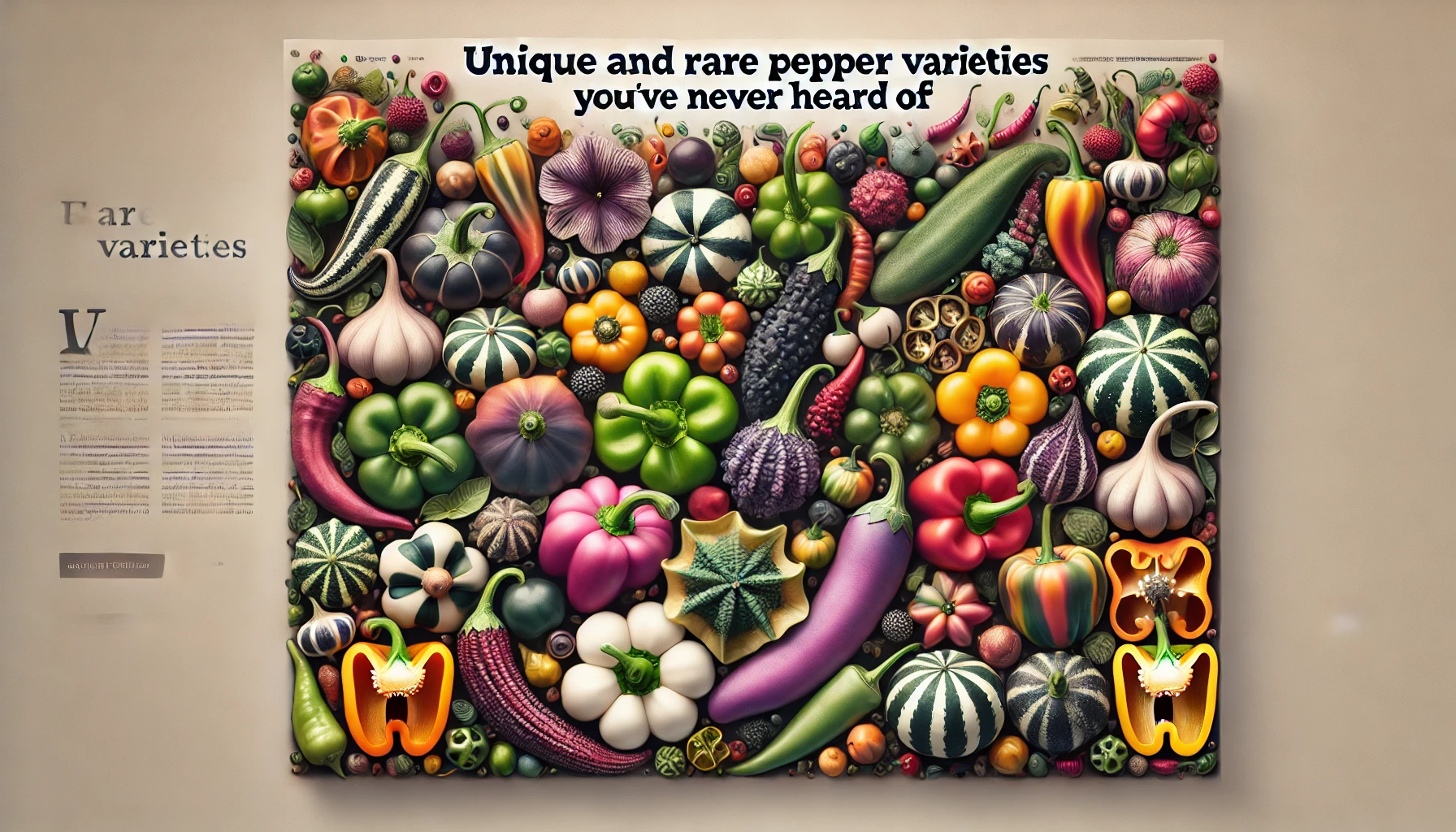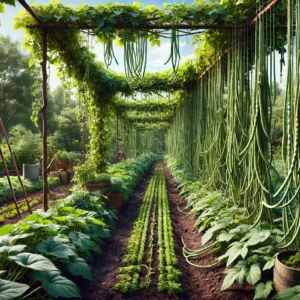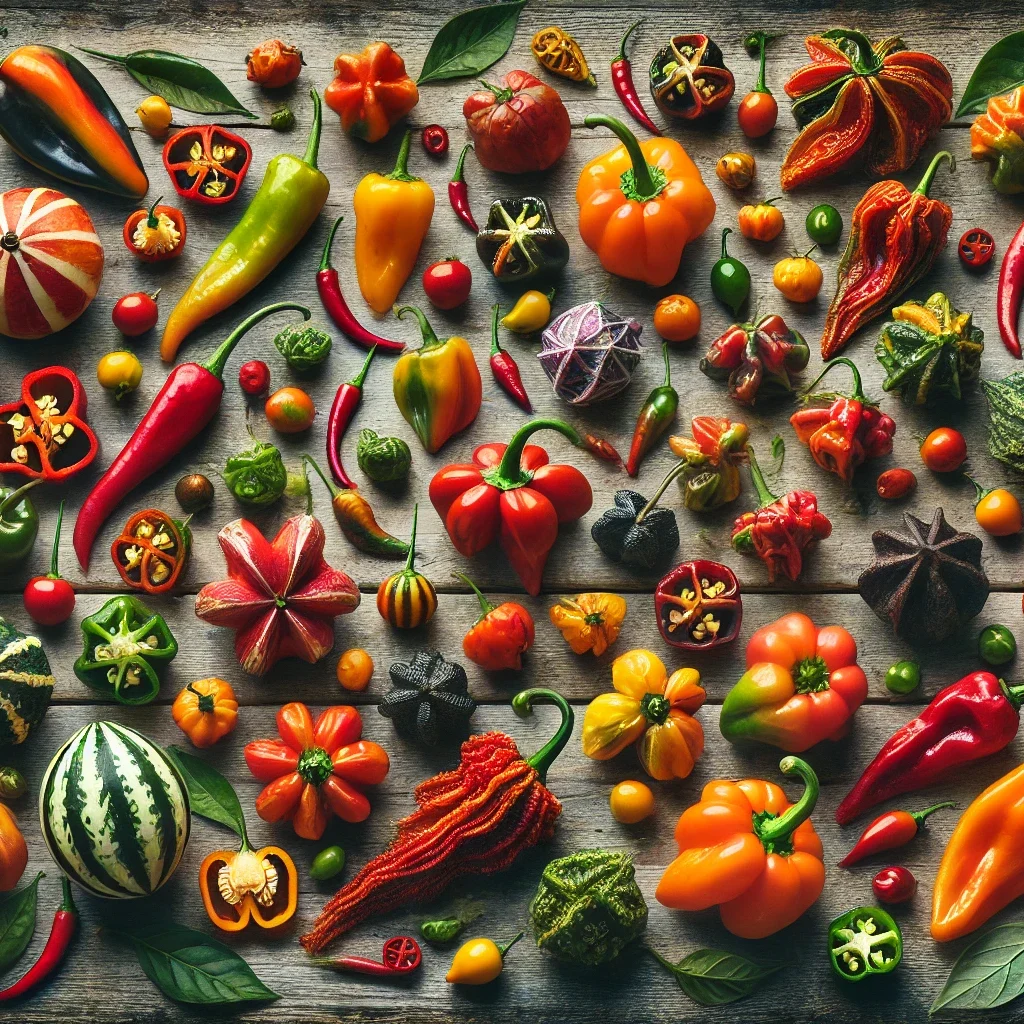
Peppers are a beloved staple in cuisines worldwide, from the fiery kick of a habanero to the sweet crunch of a bell pepper. However, beyond the common varieties, there’s a fascinating world of unique and rare peppers that many people have never encountered. In this article, we’ll explore some of these extraordinary pepper varieties, their origins, and how you can use them in your kitchen.
1. Aji Charapita
Originating from the jungles of Peru, the Aji Charapita is often considered the most expensive pepper in the world. These tiny, pea-sized peppers pack a surprising punch of heat and a fruity flavor. Traditionally, they are used in Peruvian cuisine, especially in salsas and sauces. Their rarity and the difficulty of cultivation make them a prized ingredient among gourmet chefs.
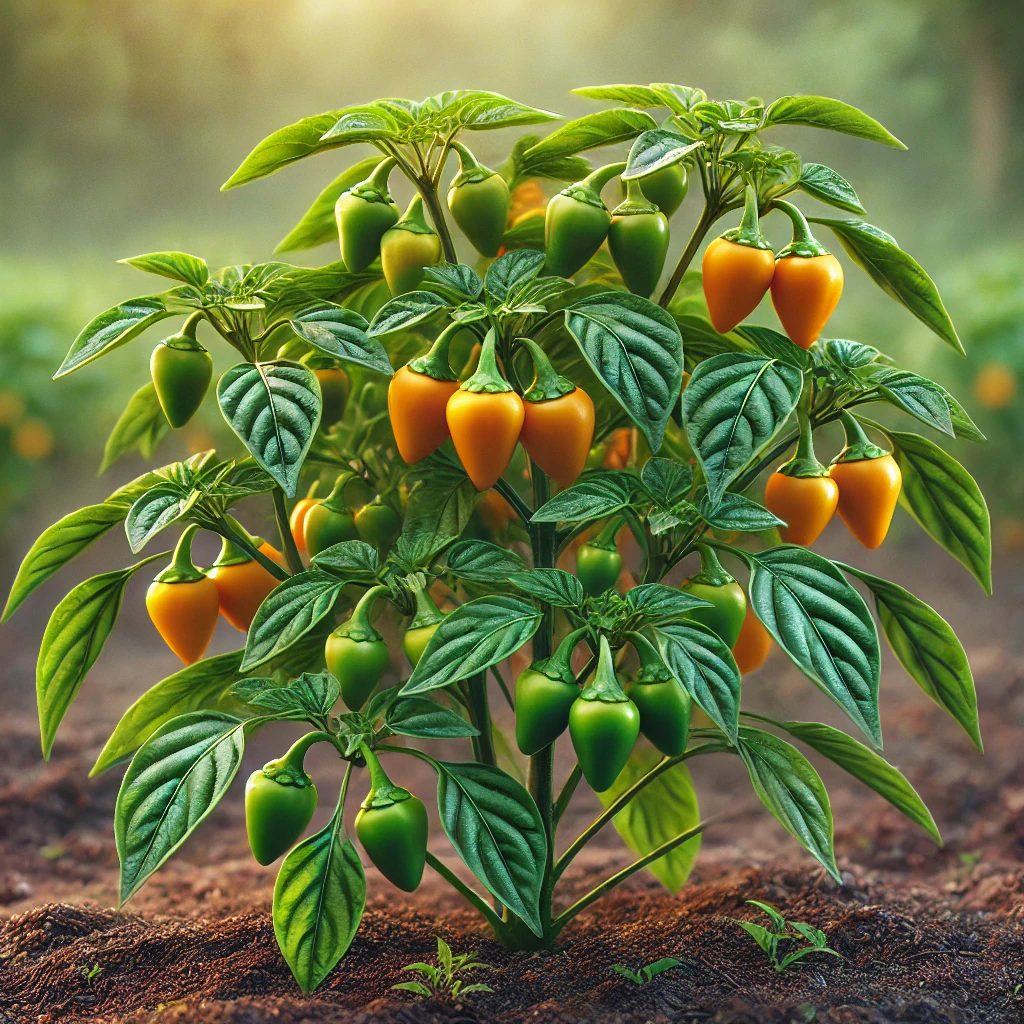
- Appearance: Tiny, pea-sized peppers that are bright orange or yellow.
- Locations: Native to the jungles of Peru.
- Ideal Weather: Warm, humid climates.
- Ideal Season: Spring and summer.
- Temperature: Thrives in temperatures between 70-85°F (21-29°C).
- Usage: Used in Peruvian cuisine, especially in salsas and sauces. Their rarity and intense fruity heat make them a prized ingredient in gourmet cooking.
2. Bishop’s Crown
The Bishop’s Crown pepper, also known as Christmas Bell or Peri Peri, is native to Barbados. Its unusual shape resembles a bishop’s hat, hence the name. This pepper offers a mild heat with a sweet and fruity undertone, making it perfect for pickling, sauces, or simply as a decorative addition to dishes.
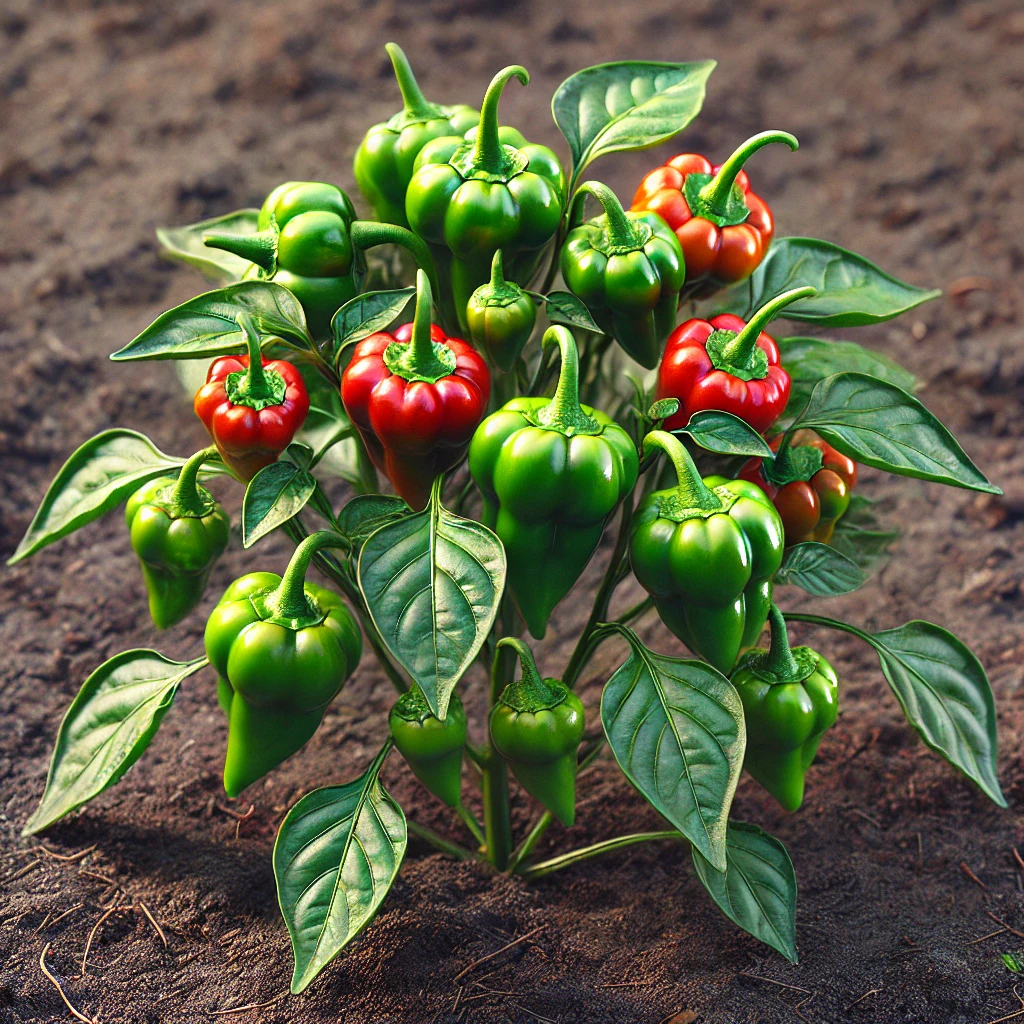
- Appearance: Distinctive bell-shaped fruit resembling a bishop’s hat, typically red or green.
- Locations: Originates from Barbados.
- Ideal Weather: Prefers warm, tropical climates.
- Ideal Season: Summer.
- Temperature: Grows well in temperatures between 70-85°F (21-29°C).
- Usage: Great for pickling, adding to sauces, or as a decorative addition to dishes due to its unique shape and mild, sweet flavor.
3. Biquinho
Hailing from Brazil, the Biquinho pepper, or “little beak,” is named for its distinctive shape. These small, red or yellow peppers are sweet with just a hint of heat. They are commonly pickled and served as appetizers or used to garnish dishes, adding a pop of color and a sweet, tangy flavor.
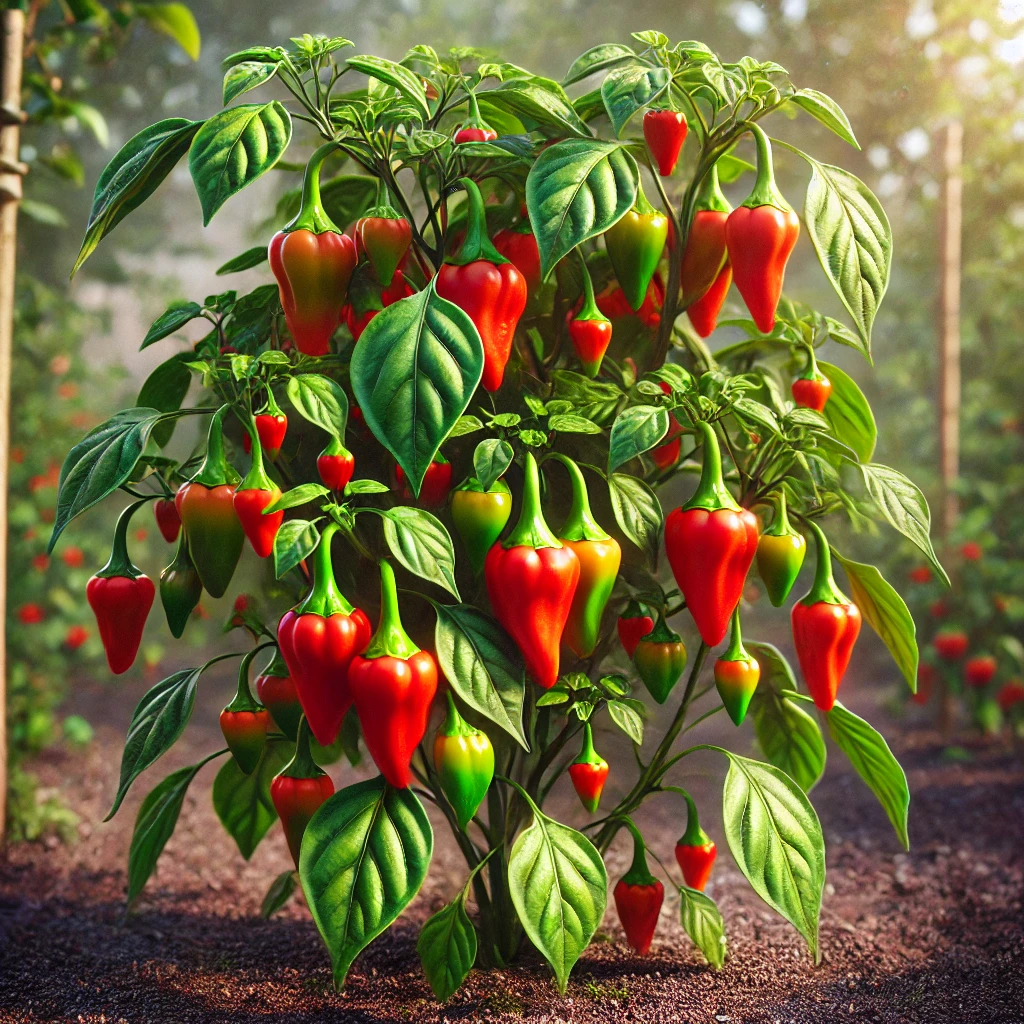
- Appearance: Small, teardrop-shaped peppers that are red or yellow.
- Locations: Native to Brazil.
- Ideal Weather: Warm and sunny conditions.
- Ideal Season: Spring and summer.
- Temperature: Best grown in temperatures between 70-85°F (21-29°C).
- Usage: Commonly pickled and served as appetizers, used to garnish dishes, adding a sweet, tangy flavor with minimal heat.
4. Pimenta de Neyde
This pepper is a natural hybrid discovered in Brazil. The Pimenta de Neyde stands out with its dark purple, almost black color that remains throughout its growth stages. It has a medium heat level and a complex flavor that combines smokiness with fruity notes. This pepper is excellent for making colorful hot sauces and salsas.
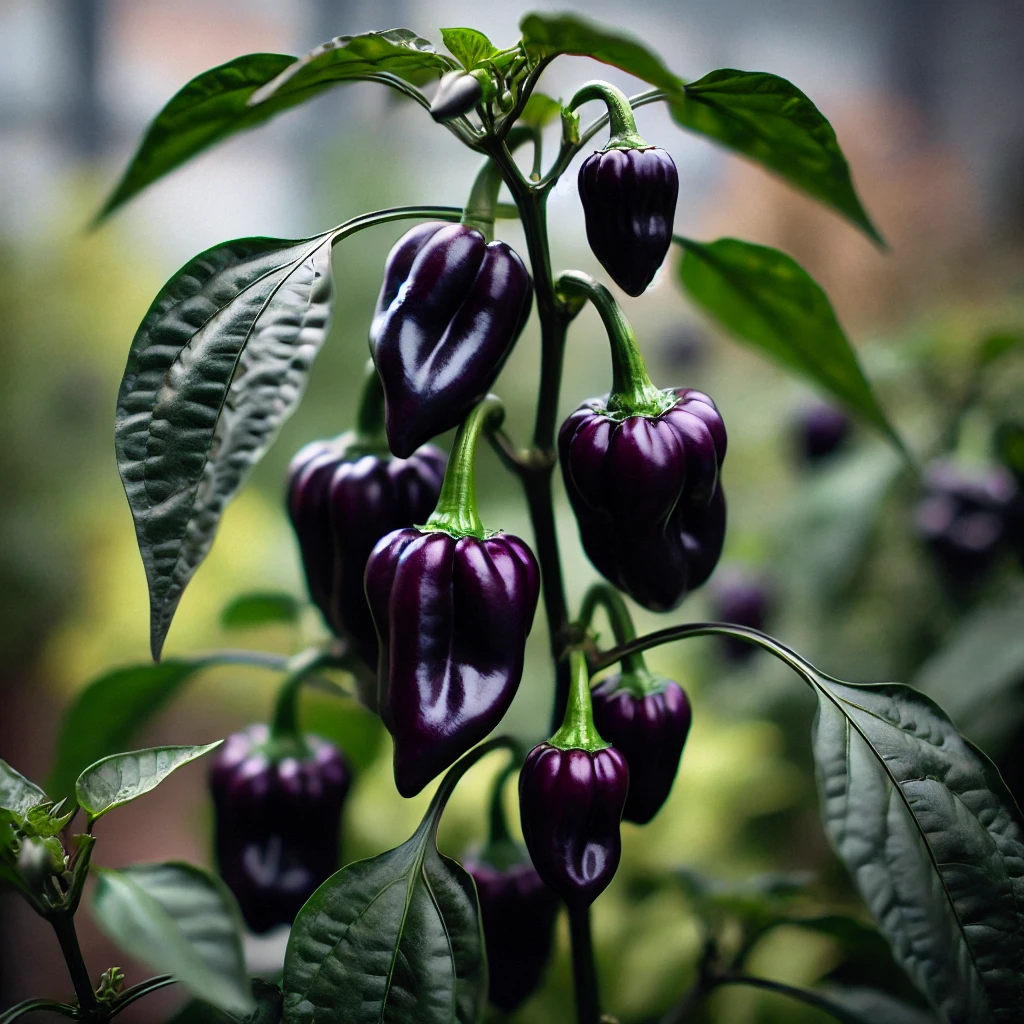
- Appearance: Dark purple, almost black peppers that retain their color throughout their growth stages.
- Locations: Discovered in Brazil.
- Ideal Weather: Warm, tropical climates.
- Ideal Season: Summer.
- Temperature: Prefers temperatures between 70-85°F (21-29°C).
- Usage: Ideal for making colorful hot sauces and salsas, offering a medium heat with a smoky, fruity flavor.
5. Fish Pepper
The Fish Pepper has a rich history rooted in African-American culinary traditions, particularly in the Chesapeake Bay area. These peppers are variegated, with striped fruits that mature from green to red. They have a medium heat and were traditionally used in fish and shellfish dishes, giving them their name. Their unique appearance and historical significance make them a fascinating addition to any garden or kitchen.
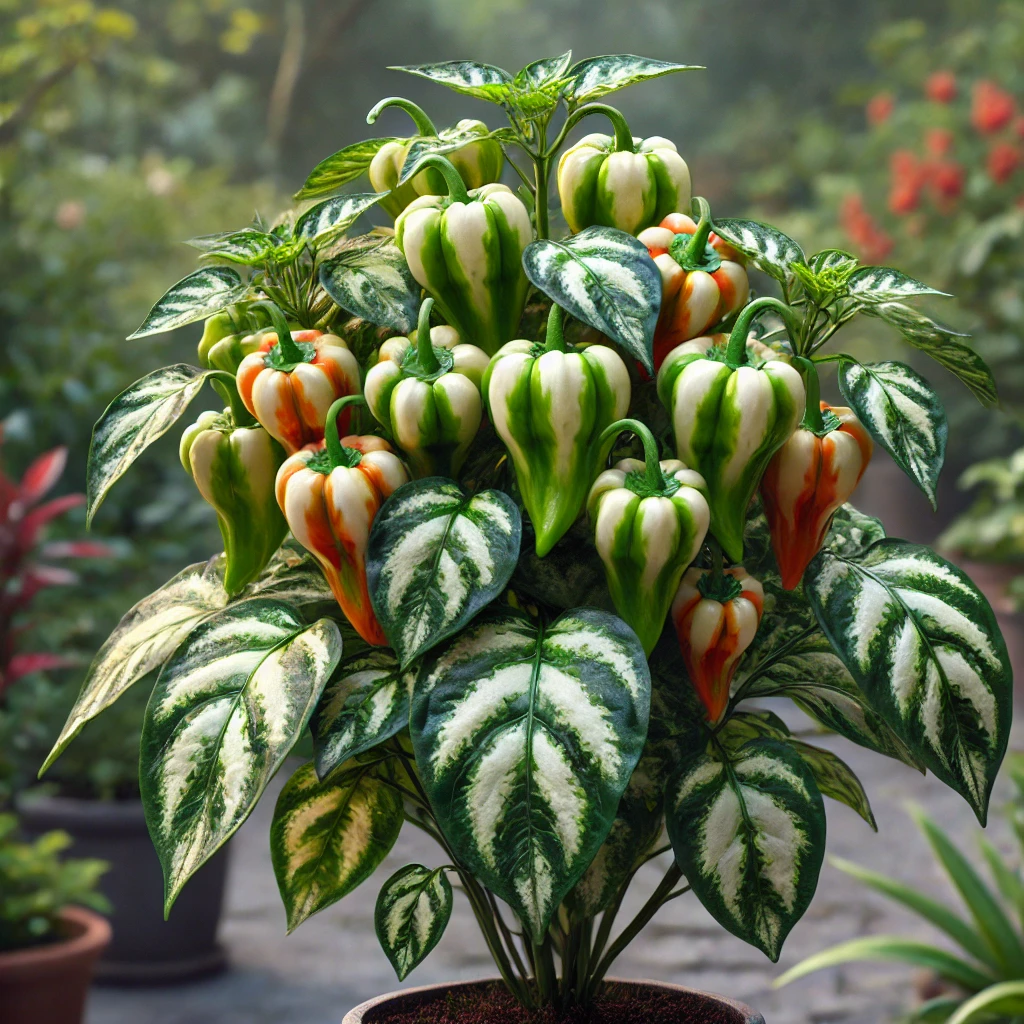
- Appearance: Variegated, striped fruits that mature from green to red.
- Locations: African-American culinary traditions, particularly in the Chesapeake Bay area.
- Ideal Weather: Warm, temperate climates.
- Ideal Season: Late spring to early fall.
- Temperature: Grows best in temperatures between 70-85°F (21-29°C).
- Usage: Traditionally used in fish and shellfish dishes. Its medium heat and unique appearance make it a fascinating addition to any garden or kitchen.
6. Aji Amarillo
Aji Amarillo, which means “yellow chili” in Spanish, is a staple in Peruvian cuisine. These bright yellow peppers are known for their fruity, slightly citrusy flavor and moderate heat. They are often used in traditional dishes like ceviche and aji de gallina. Despite their popularity in Peru, Aji Amarillo remains relatively unknown outside South America.
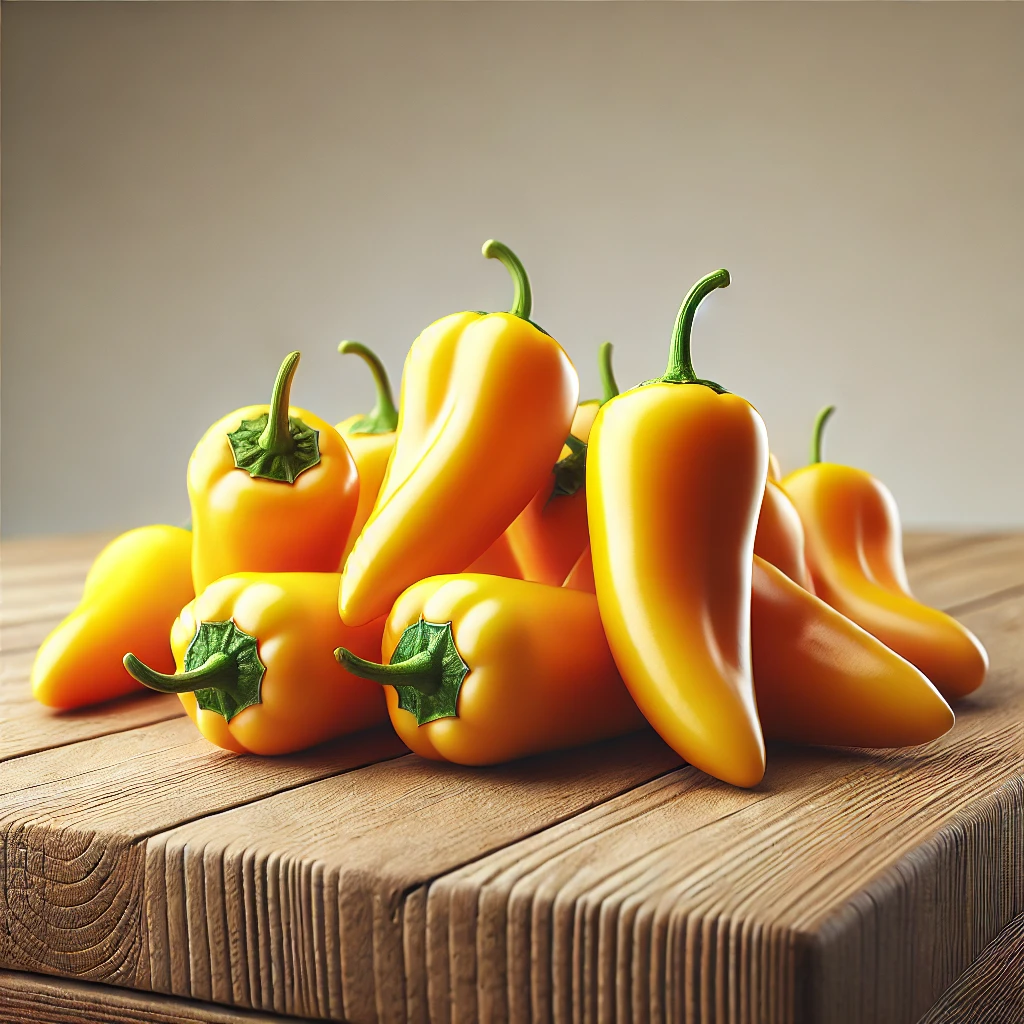
- Appearance: Bright yellow, elongated peppers.
- Locations: Peru.
- Ideal Weather: Warm climates with plenty of sunshine.
- Ideal Season: Summer.
- Temperature: Thrives in temperatures between 70-85°F (21-29°C).
- Usage: A staple in Peruvian cuisine, often used in ceviche and aji de gallina, adding a fruity, slightly citrusy flavor and moderate heat.
7. Black Hungarian
The Black Hungarian pepper is not only strikingly beautiful with its dark, almost black skin that ripens to red, but it also offers a unique flavor profile. It has a mild heat level and a slightly smoky taste, making it perfect for adding a subtle kick to salads, salsas, and decorative dishes. The plant itself is also ornamental, with purple flowers and dark foliage.
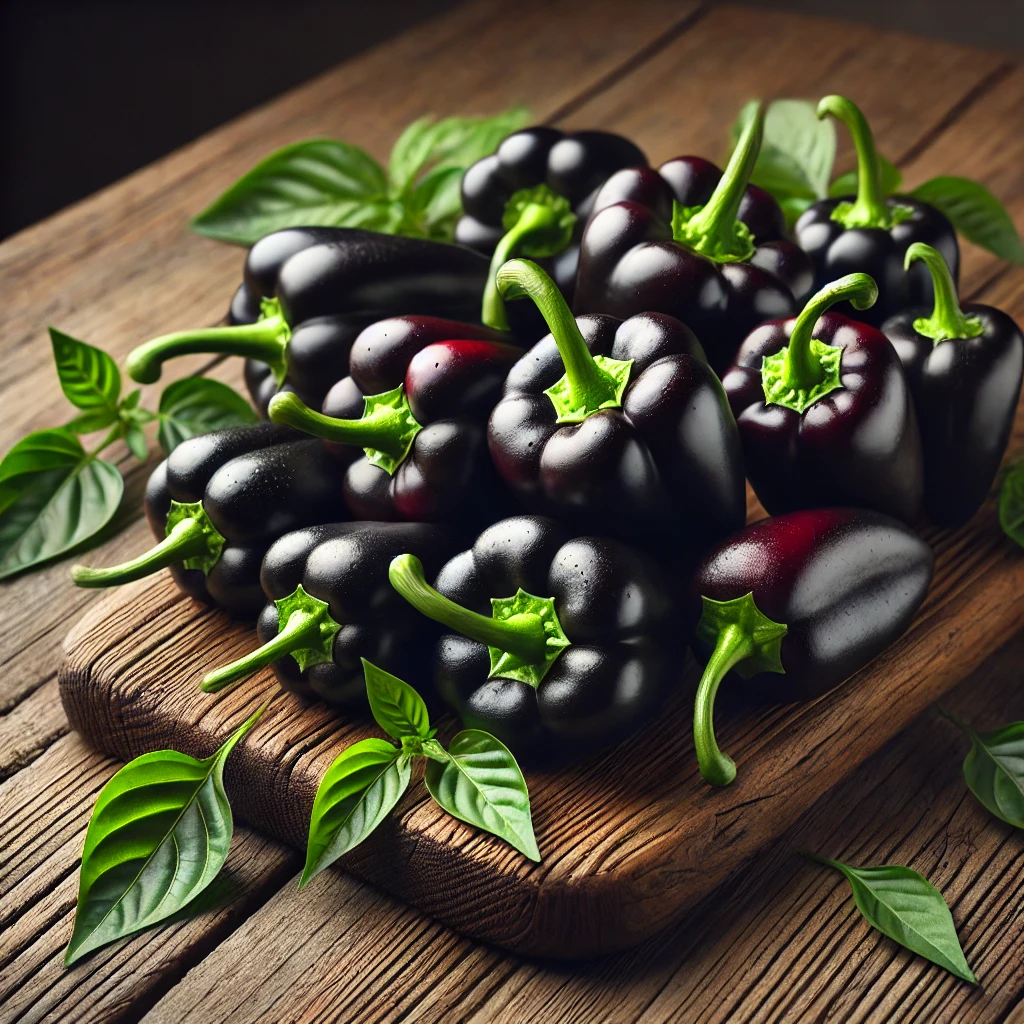
- Appearance: Dark, almost black peppers that ripen to red; the plant also has purple flowers and dark foliage.
- Locations: Originates from Hungary.
- Ideal Weather: Prefers warm, sunny conditions.
- Ideal Season: Summer.
- Temperature: Best grown in temperatures between 70-85°F (21-29°C).
- Usage: Adds a mild heat and smoky taste to salads, salsas, and decorative dishes. The ornamental plant also adds aesthetic value to gardens.
8. Pasilla de Oaxaca
Originating from Oaxaca, Mexico, the Pasilla de Oaxaca is a smoked chili pepper that brings a rich, smoky flavor with medium heat. It’s commonly used in traditional Mexican mole sauces and stews, imparting a deep, complex flavor that enhances any dish. The smoking process gives it a unique taste that sets it apart from other dried chilies.
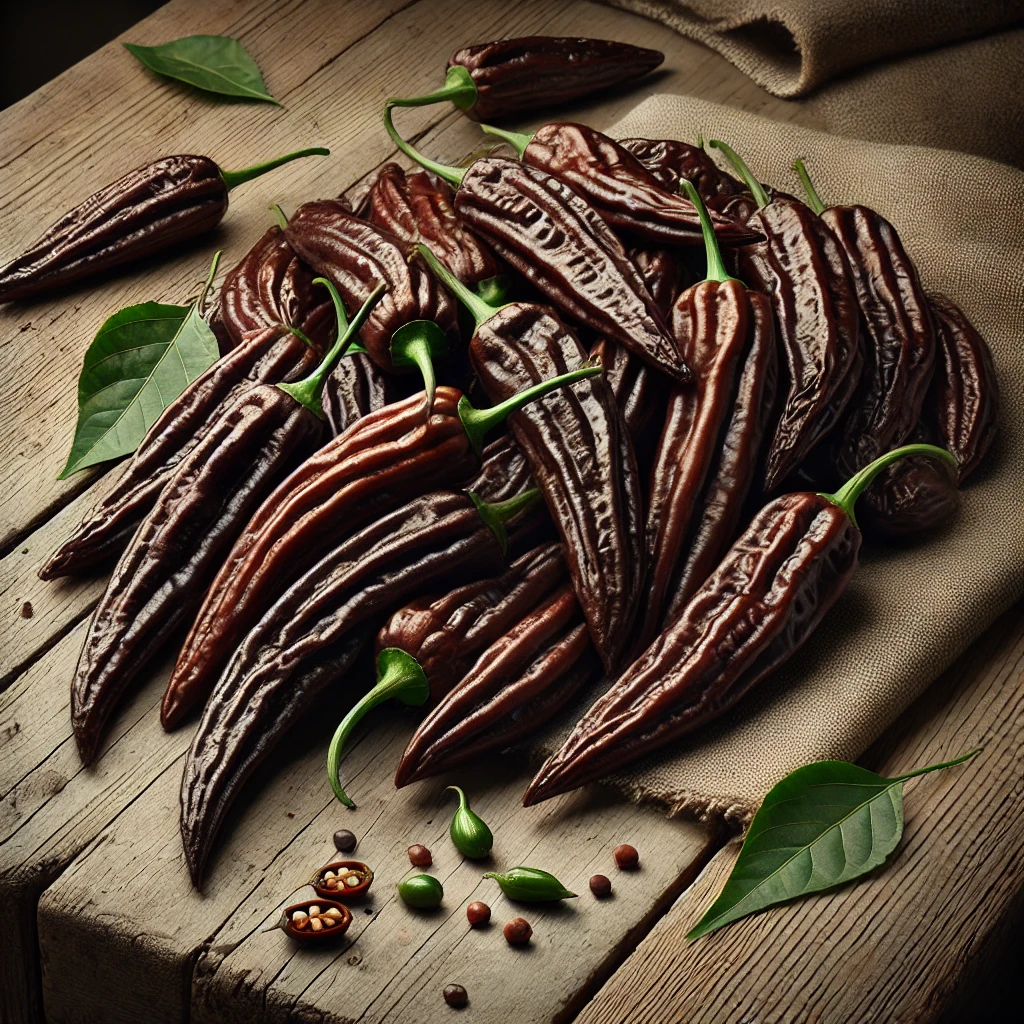
- Appearance: Dark, wrinkled, dried chili peppers.
- Locations: Oaxaca, Mexico.
- Ideal Weather: Warm, arid climates.
- Ideal Season: Late summer to early fall.
- Temperature: Thrives in temperatures between 70-85°F (21-29°C).
- Usage: Commonly used in traditional Mexican mole sauces and stews, imparting a rich, smoky flavor with medium heat.
9. Peter Pepper
Known for its unusual shape, the Peter Pepper is sure to spark conversation. This heirloom pepper comes in red and yellow varieties and has a medium heat level. Despite its novelty appearance, it’s quite versatile and can be used in the same ways as other hot peppers, whether in sauces, salsas, or as a pickled treat.
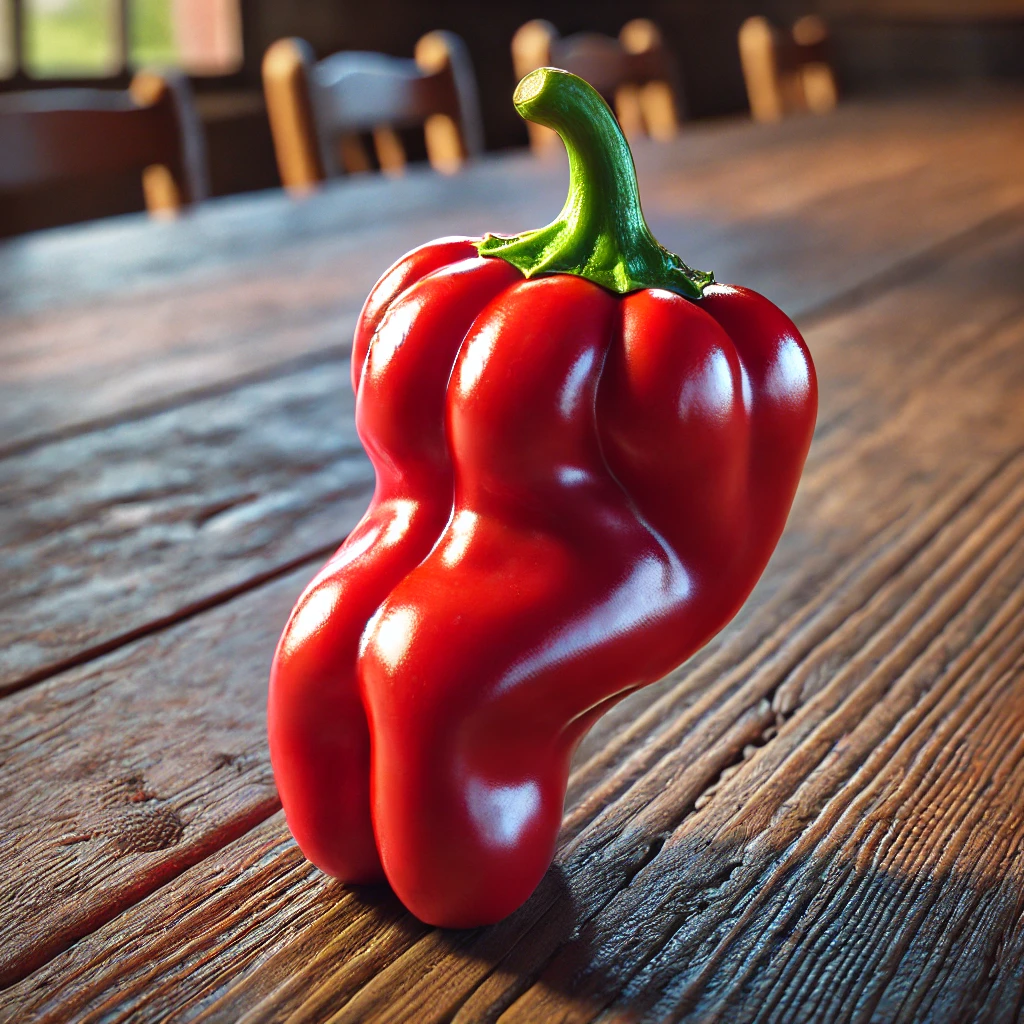
- Appearance: Dark, wrinkled, dried chili peppers.
- Locations: Oaxaca, Mexico.
- Ideal Weather: Warm, arid climates.
- Ideal Season: Late summer to early fall.
- Temperature: Thrives in temperatures between 70-85°F (21-29°C).
- Usage: Commonly used in traditional Mexican mole sauces and stews, imparting a rich, smoky flavor with medium heat.
10. Sugar Rush Peach
The Sugar Rush Peach pepper is a relatively new variety developed in the United Kingdom. These elongated peppers ripen to a peachy color and offer a unique combination of sweetness and heat. They are great for making sweet and spicy sauces or adding a fruity kick to salads and salsas.
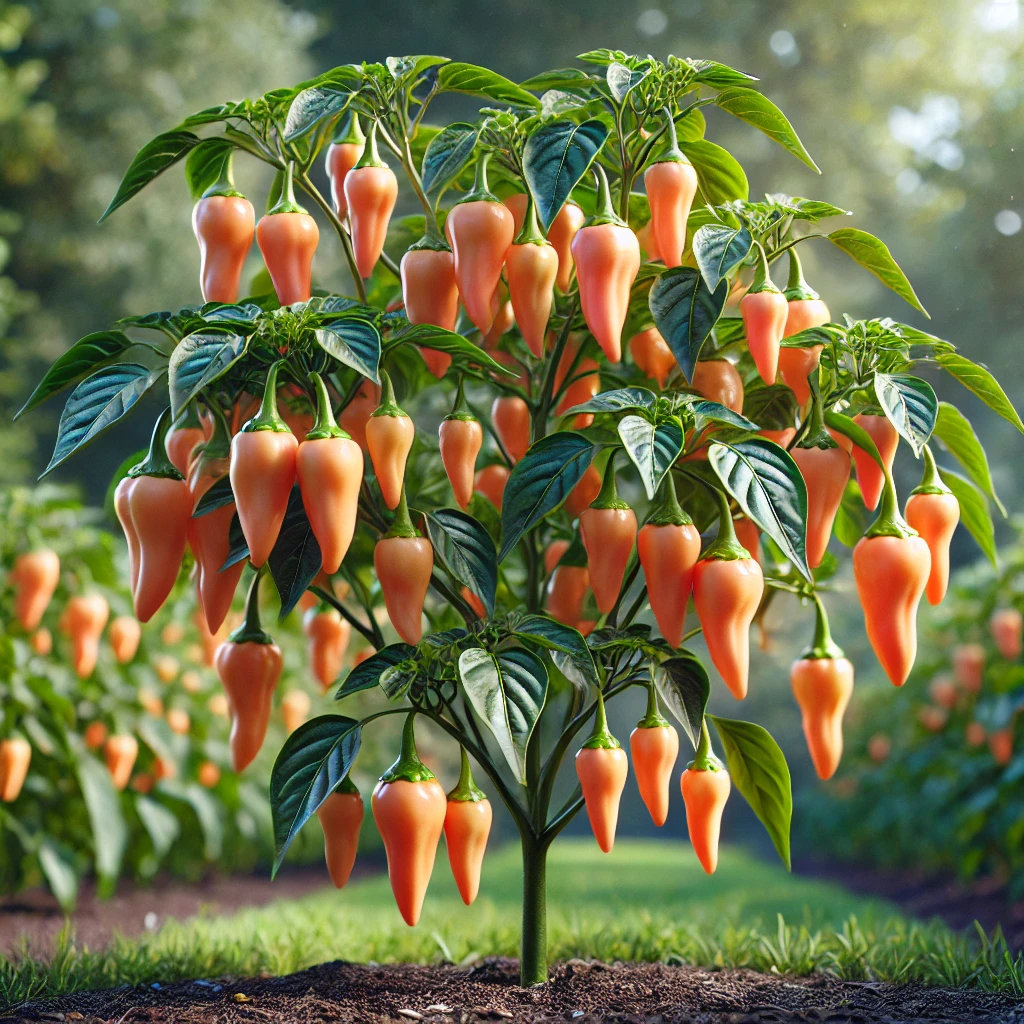
- Appearance: Elongated, peach-colored peppers.
- Locations: Developed in the United Kingdom.
- Ideal Weather: Warm, sunny conditions.
- Ideal Season: Summer.
- Temperature: Best grown in temperatures between 70-85°F (21-29°C).
- Usage: Perfect for making sweet and spicy sauces or adding a fruity kick to salads and salsas with its unique combination of sweetness and heat.
Cultivating Rare Peppers
Growing rare peppers can be a rewarding endeavor for any gardening enthusiast. Here are some tips to help you get started:
- Climate Considerations: Most peppers thrive in warm, sunny conditions. Ensure your garden or growing area receives plenty of sunlight.
- Soil Preparation: Peppers prefer well-drained, loamy soil rich in organic matter. Adding compost can enhance soil quality.
- Watering: Keep the soil consistently moist but not waterlogged. Overwatering can lead to root rot and other issues.
- Spacing: Give each plant enough space to grow. Crowding can reduce airflow and increase the risk of disease.
- Fertilization: Use a balanced fertilizer to provide essential nutrients throughout the growing season.
- Pest Management: Keep an eye out for common pests like aphids and caterpillars. Organic pest control methods, such as neem oil or insecticidal soap, can be effective.
Cooking with Rare Peppers
Incorporating rare peppers into your cooking can elevate your dishes and impress your guests. Here are some culinary ideas:
- Salsas and Sauces: Rare peppers can add unique flavors and colors to your salsas and hot sauces.
- Pickling: Pickling enhances the flavor of peppers and extends their shelf life.
- Stuffing: Larger varieties like the Bishop’s Crown are perfect for stuffing with meats, cheeses, or grains.
- Garnishing: Use brightly colored peppers like Biquinho or Black Hungarian to garnish dishes for visual appeal.
- Infusions: Create pepper-infused oils or vinegars for a flavorful addition to salads and marinades.
Conclusion
Exploring the world of unique and rare pepper varieties can add excitement and diversity to your culinary experiences. From the fiery Aji Charapita to the sweet and tangy Biquinho, each pepper brings its own distinct flavor and history to the table. Whether you’re a gardener looking to expand your collection or a cook eager to experiment with new ingredients, these rare peppers offer endless possibilities. So, why not spice up your life and give these extraordinary peppers a try?
By delving into these lesser-known varieties, you not only expand your palate but also help preserve the rich biodiversity of peppers. Happy growing and cooking!
